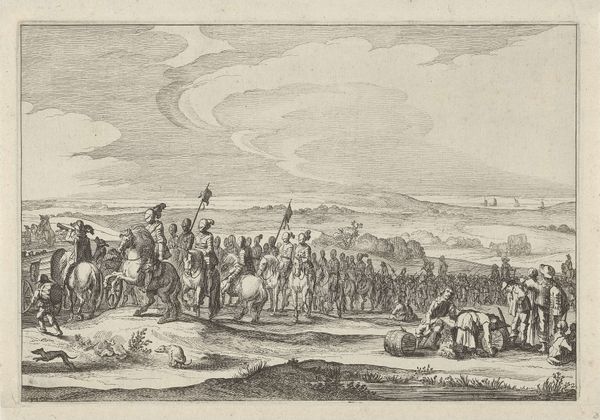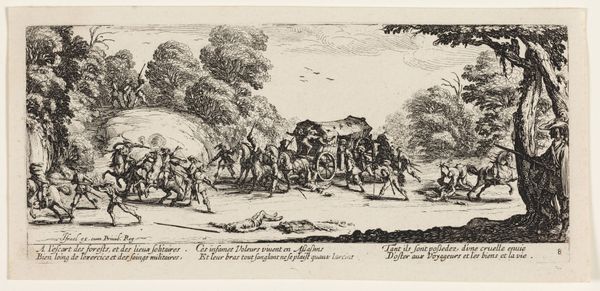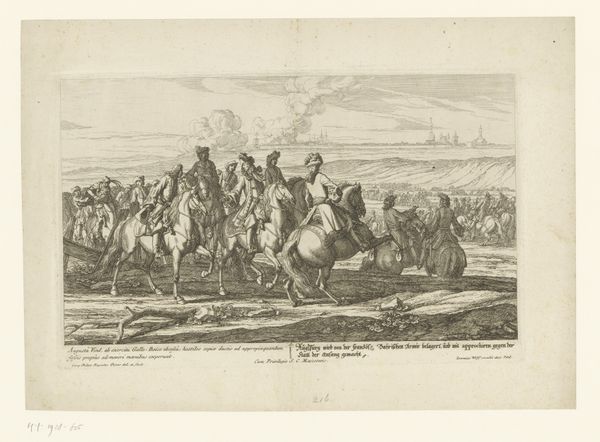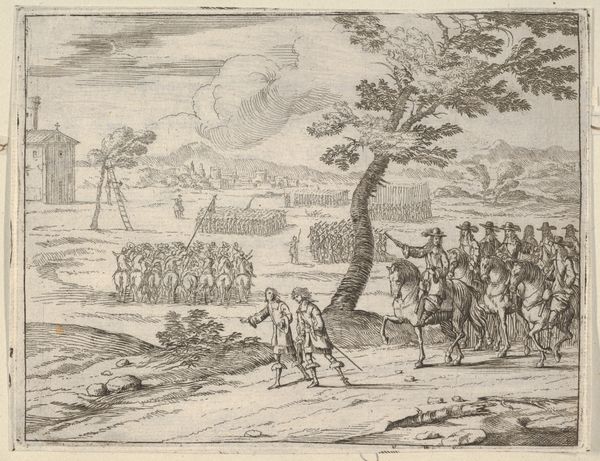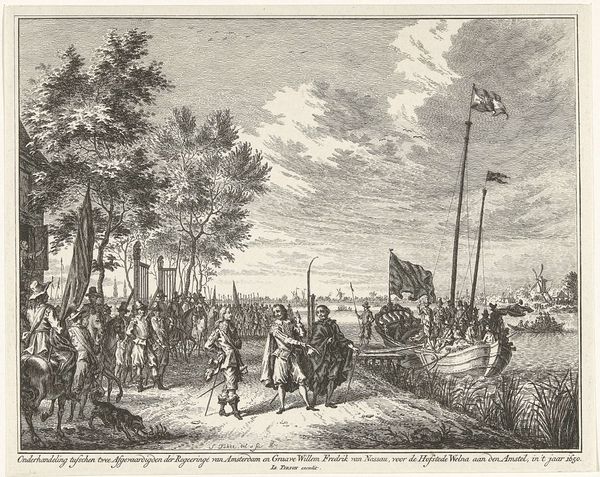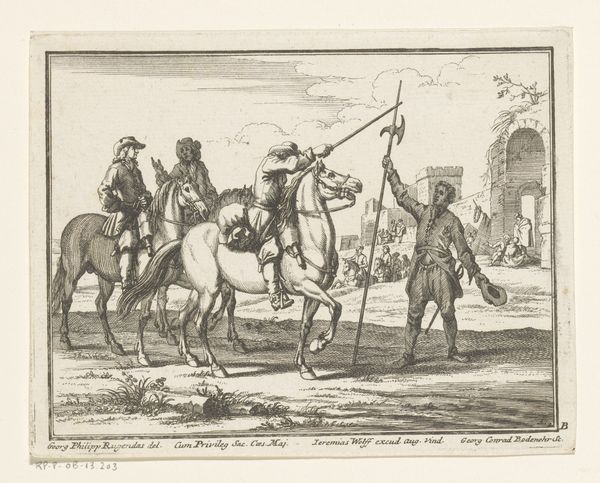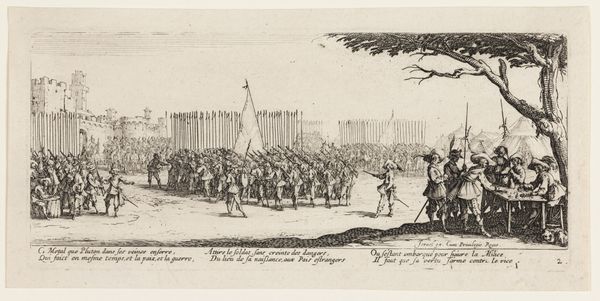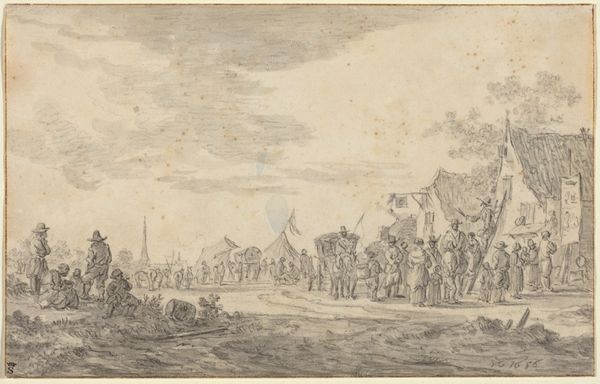
Plate 3: An officer giving orders to a soldier in centre foreground, cannon at left, from 'Various Military Caprices' (Varii capricci militari) 1641
0:00
0:00
drawing, print, etching
#
drawing
#
baroque
# print
#
etching
#
landscape
#
figuration
#
soldier
#
history-painting
Dimensions: Sheet: 3 9/16 x 5 11/16 in. (9.1 x 14.5 cm) Plate: 3 7/16 x 5 9/16 in. (8.8 x 14.1 cm)
Copyright: Public Domain
Curator: Immediately, the starkness strikes me; there’s a distinct sense of grimness about this military scene. Editor: This is "Plate 3: An officer giving orders to a soldier in centre foreground, cannon at left, from 'Various Military Caprices'" etched by Stefano della Bella in 1641. Look closely at how della Bella captures the tools of warfare – the cannon itself. Curator: Absolutely. It is the cannon which is so dominant. That imposing cannon dominates the left side. One might read the cannon as phallic symbol of aggressive power. Then there's the body language, wouldn't you agree, suggests tension and the weight of command. Editor: The etching medium allows for incredible detail – look at the textures of the uniforms, the intricate rendering of the cannon. The way he's layered the background gives us a real sense of the labour and industrial practices, even with the seemingly barren environment, involved in warfare during this period. The material limitations imposed by printmaking clearly drive della Bella’s choices. Curator: And that backdrop feels almost theatrical. Are those ruins? It echoes classical themes of power and decay – of empires rising and inevitably crumbling. Military themes in art often become entangled with classical symbolism as justification. Perhaps here, della Bella makes a warning. Editor: It’s also fascinating to see how della Bella is navigating the expectations of art during his era. On one hand, there's attention paid to depicting the individual features. But the realities and means by which the piece was made seem to drive meaning as well. The scale indicates accessibility and therefore broader consumption. Curator: It really underscores the emotional ambiguity often present in conflict; you can sense a narrative and emotional undercurrent beyond the explicit scene of command and obedience. A scene we all too easily recognise and carry the echoes of even now. Editor: Exactly, and by delving into the labor behind it, and the context of art production, it helps us understand why such an image was deemed important in its time, what conversations it hoped to inspire.
Comments
No comments
Be the first to comment and join the conversation on the ultimate creative platform.
